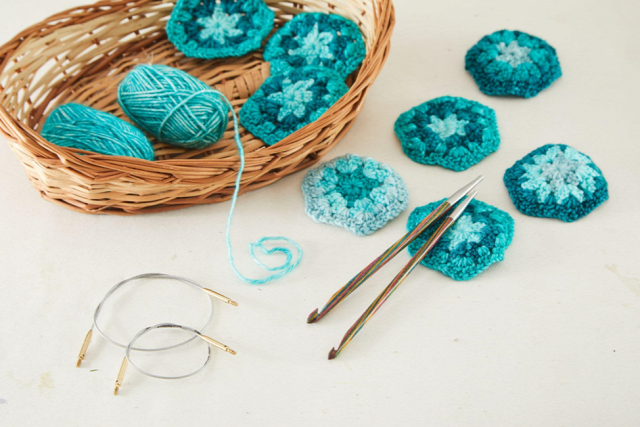
Crochet, like any craft, is something you need to practice and learn. Just as the perfect crochet hook seamlessly weaves through yarn, mastering this art requires patience and dedication. But sometimes, this craft leads to frustration, especially when aiming to complete a project and finding it taking longer than expected. If you're reading this blog, it shows your determination to actively seek insights to overcome these hurdles and enhance your crochet experience.
Let's get started quickly to find the most possible reasons.
Unfamiliarity with the tool and pattern
Are you trying your hand at Tunisian crochet hooks and a new or complex pattern? This might feel like navigating uncharted territory. Mastery takes time to thoroughly acquaint yourself with the tool and pattern—reading, understanding, and visualizing the steps—lays a strong foundation for smoother crocheting.
Complexity of the Project
Intricate projects demand time and attention to detail. Complex stitch patterns, color changes, or intricate designs add depth and character to your crochet work but often extend the project duration. Embrace these challenges as opportunities to level up your skills, knowing the extra time invested will yield a remarkable masterpiece.
Tangled Yarn Woes
Untangling yarn can feel like a never-ending battle. If your yarn is constantly tangling or splitting, it could add unnecessary minutes to your project. Investing time organizing and prepping your yarn before starting can save you plenty of hassle and time in the long run.
Yarn Choice
Beyond just thickness and texture, certain specialty yarns, like those with sequins or varying textures, might need extra care and handling. The uniqueness of these yarns can lead to adjusting the tension or switching crochet hooks frequently, contributing to a slower pace. Additionally, hand-dyed or variegated yarns might require strategic planning to align colors, adding another layer of complexity.
Unforeseen Mistakes
Sometimes, mistakes might be subtle and not immediately visible. Unraveling several rows or sections to rectify an unnoticed error further extends project time. Additionally, troubleshooting and finding solutions to mistakes can slow down progress significantly, especially if they're intricate or deep within the project.
Lack of Planning
Starting a project without thoroughly understanding the pattern or all the necessary tools, such as when there is a need for a single ended crochet hook, you choose double ended, might lead to frequent pauses for research or material gathering. Underestimating the time needed to familiarize yourself with the pattern or gather supplies can prolong the start of the actual crocheting process.
Motivation and Burnout
Maintaining consistent motivation throughout a project's duration can be challenging. Periods of burnout or lack of enthusiasm might lead to longer breaks or slower progress. Finding ways to stay inspired and taking breaks when needed can help maintain a steady pace.
Unrealistic Expectations
Setting overly ambitious deadlines or comparing your progress to others might create unnecessary pressure. Adjusting your expectations to align with your own pace and enjoyment of the process is crucial to avoid frustration and maintain a healthy relationship with your craft.
The Impact of Crocheting on Grip Strength
Crocheting, while delightful, can strain fingers and hands due to repetitive motions and sustained grip. The constant movement of fingers and wrists can lead to fatigue, especially when working with smaller hooks or tougher yarn. Hence, selecting the right crochet hook is crucial. Wooden crochet hooks, with their warmth and smooth finish, offer comfort, minimize snagging, and are gentle on hands, enabling faster stitches. Taking breaks, stretching exercises, using ergonomic tools, and varying hand positions can alleviate strain, ensuring a more comfortable and sustainable crochet experience.
By addressing these aspects, you can pinpoint potential hurdles that might slow your crochet progress and take proactive steps to overcome them, ensuring a more efficient and enjoyable crochet experience.


